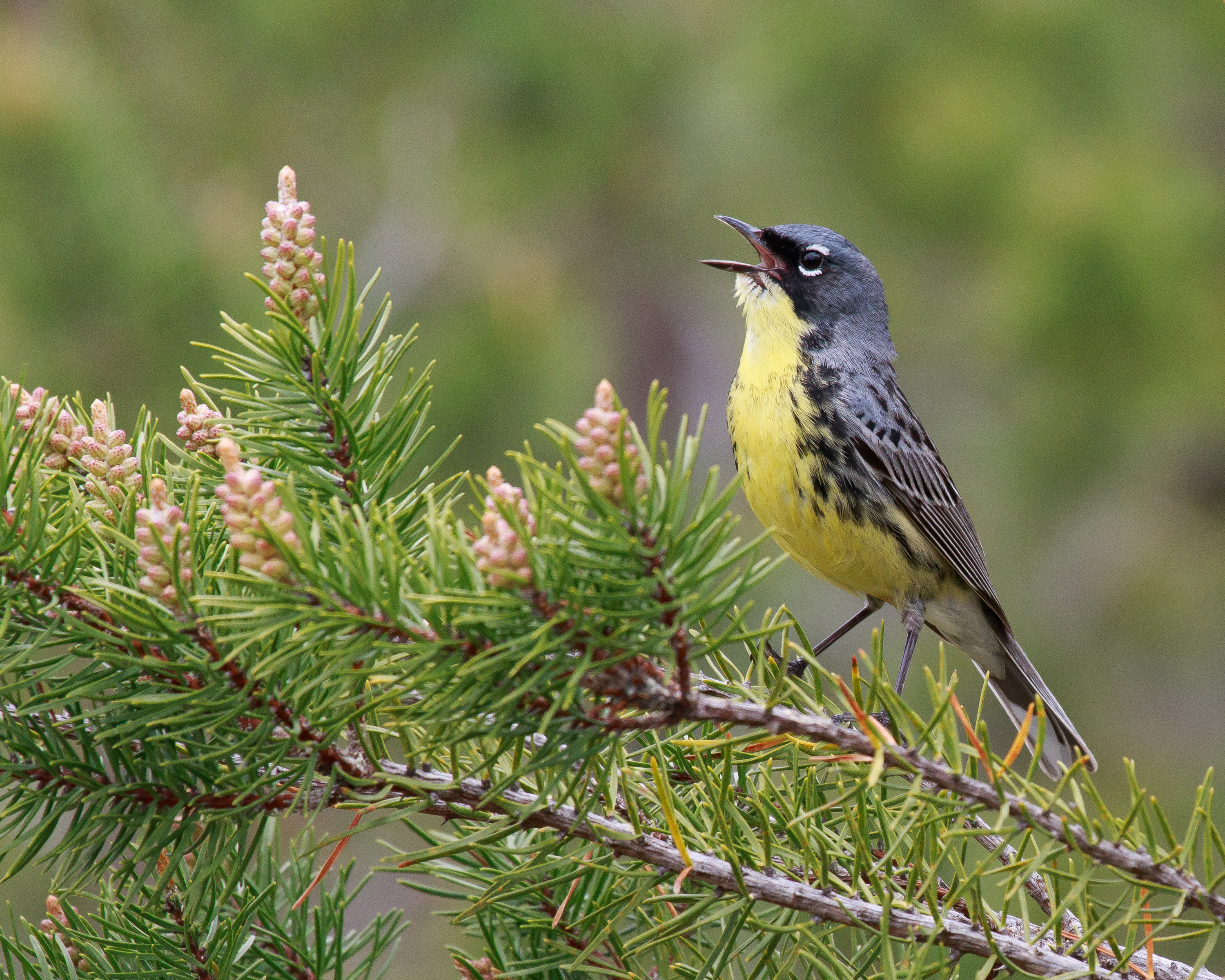FOR IMMEDIATE RELEASE
November 8, 2019
Media Contact:
Molly Keenan
Communications & Marketing Coordinator
[email protected]
517-580-7364
Kirtland’s Warbler Removed from Endangered Species List after 52 Years
OKEMOS, MI – The U.S. Fish and Wildlife Service announced in October 2019 that the Kirtland’s Warbler, one of the first species to receive protection under the Endangered Species Act, is to be officially delisted today. The species has been exceeding its recovery goal for nearly two decades, and has now reached a population size of greater than double that goal. The current population is estimated to surpass 2,300 breeding pairs across its range.
When biologists started monitoring the Kirtland’s Warbler population in Michigan in the 1940s, they quickly observed decreasing numbers. In 1967, the species was added to the initial Endangered Species Act list. By the 1970s, the Kirtland’s Warbler had experienced a 60% population decline.
One reason for its decline was attributed to human-caused suppression of wildfires in the early twentieth century. Since Kirtland’s Warblers require young jack pine stands for nesting and rearing their offspring, natural wildfires are crucial for maintaining suitable habitat. Without this type of natural disturbance, proper habitat for this bird drastically declined. Kirtland’s Warblers faced another threat when the brown-headed cowbird population skyrocketed; this species acts as a parasite by laying their own eggs in Kirtland’s Warbler nests, resulting in robust cowbird chicks that easily outcompete warbler chicks for survival.
To combat these issues, the comprehensive management plan for Kirtland’s Warblers included managing for new jack pine growth by forestry agencies (with the help of private landowners), and strict cowbird monitoring and control by wildlife managers.
“Perhaps one of the best components of the Kirtland’s Warbler conservation success story is how addressing endangerment was not done in a siloed fashion — it was done collaboratively and with the essential elements and guidelines of ecology in mind. The degree to which forest management priorities were dedicated to responding to, supporting, and sustaining the recovery of the Kirtland’s Warbler is truly remarkable and absolutely necessary in achieving the recovery that we have for this bird,” said Michigan Audubon Executive Director Heather Good.
Although the Kirtland’s Warbler population is now stable and rising in Michigan as well as in Wisconsin and Ontario, Canada, it is vital that the conservation efforts implemented thus far will continue well into the future.
Kirtland’s Warbler Program Director and Conservation Specialist for American Bird Conservancy Dave Ewert said, “The delisting of the Kirtland’s Warbler was accomplished due to the dedicated efforts of agencies, universities, non-profits, corporations, and the public over many decades. Their highly focused and collaborative efforts to protect the Kirtland’s Warbler during breeding and non-breeding seasons have been successful. And, because the efforts must be sustained, these same groups are working to ensure that future management and other conservation activities will continue. To that end, additional funding, to replace that lost from endangered species programs, is being raised to ensure that required forest and cowbird management is sustained, research programs implemented, and that the needs of the Kirtland’s Warbler on its Michigan, Wisconsin, and Ontario breeding and Bahamas wintering grounds, and en route during migration, will be met. Hats off to all those who have contributed to the recovery of the Kirtland’s Warbler and to the maintenance of the landscapes that ensure the future of this iconic species.”
Michigan Audubon will offer Kirtland’s Warbler Tours out of Hartwick Pines State Park in Grayling from May 25 through June 30, 2020. Please visit https://www.michiganaudubon.org/kirtlands-warbler-tours/ to learn more.
The Kirtland’s Warbler recovery story highlights the importance of how science informs management to successfully conserve threatened and endangered species. This species will continue to be adaptively managed to optimize its ecological status. “The collaborative, successful movement to save a beloved songbird from extinction is a celebratory milestone,” Good said. “Michigan Audubon is proud to be a part of supporting this bird and its habitat.”
For more information on the post-delisting management plan for Kirtland’s Warblers, please visit https://www.fws.gov/Midwest/endangered/birds/pdf/DraftPDMPforKIWA2018May.pdf.
###
About Michigan Audubon
Michigan Audubon connects birds and people for the benefit of both, through conservation, education, and research efforts in the state of Michigan. As a non-profit conservation organization, Michigan Audubon has 18 sanctuaries, more than 30 local chapters throughout the state, and manages Whitefish Point Bird Observatory. Visit www.michiganaudubon.org for more information.
Click here to download a pdf of this press release.
Photo credit: Kirtland’s Warbler © Joe Povenz

